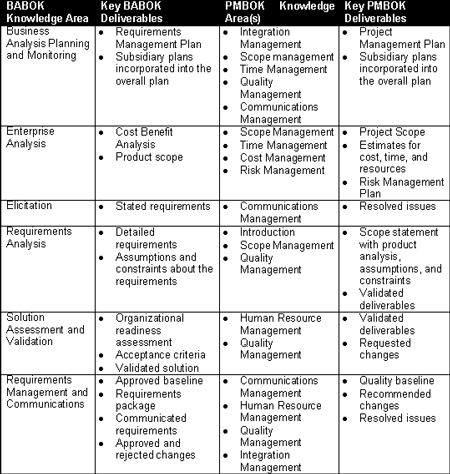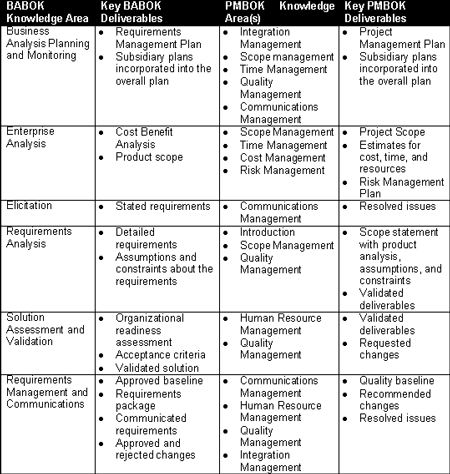Business Analyst Development in the Insurance Industry
Transformation. If the topic was not in the last Board briefing, it was in the one before that. A Celent review of the websites of largest 20 property and casualty and life/health insurers found the theme of business/operational/company transformation featured prominently on 40% of them. Major investments are being made in new technologies across multiple areas-policy administration, rules engines, predictive modeling, workflow managers-to change the way business is currently performed.
Enterprise change happens on multiple levels and with the effort of many individuals. It cannot happen without modifications to business processes at the transaction level, as committed employees work with business owners to analyze changes to the way work is done. Once that analysis is complete, support areas such as IT, HR, and Operations must work to implement the new methods. In most insurance companies, the people responsible for identifying, facilitating, documenting, and communicating the new business requirements are the business analysts.
In the Celent report The 18 Month Rule: Avoiding The Endless Project, (November 2006), it was noted that “between 30% and 80% of all large projects fail, with most estimates coming in on the higher side of this range.” The definition of failure is a project that is not fully implemented on time and does not meet the original requirements.
With this in mind, what is the state of development of the critical business analyst function in the industry? Celent researched leading insurance firms and found that the professional development of business analysts lags that of other functions. In many cases, the job lacks clear definition and boundaries. Skills are often learned “as and when” through individual effort and initiative. BA development has been described as an “afterthought.” In contrast to the underwriting (CLU, CPCU, IIA), claims (AIC), and project management (PMP) designations, there is no industry-wide accepted certification of business analysts.
The good news is that disciplined, structured development programs in the insurance industry exist and have been recently implemented. These initiatives have been justified by a disciplined examination of the role and the contribution of BAs. This report examines these initiatives and also outlines the business case. Additionally, action steps to move business analyst development to the next performance level are detailed.
What is a Business Analyst?
The business analyst operates at the intersection of business users and information technology. (Note: Since so much business analyst work is IT-related, in this report IT is used as a placeholder for all of the support groups necessary to implement new/revised business requirements.)
Core business analyst (BA) tasks deal with requirements definition, acceptance test case development and execution, and client communication. Defining requirements can include business process design, use case development, and user interface specification. In companies without a dedicated Quality Assurance area, BAs play a prominent role in acceptance testing and may be involved in other test activities (system and or integration testing) as well. The BA is also recognized as a subject matter expert, having earned this designation through many years of experience with a specific business function or transaction system. Project management tasks can also fall to the BA, especially in smaller organizations or for implementations of limited scope. Emerging duties of the BA include the creation and maintenance of automated rules in rules engine applications, responsibility for business process management (BPM) tools, and the use of automated requirements generation tools.
|
Table 1: BA Duties |
|
|
Always |
Sometimes |
|
Requirements collection, definition, and communication |
Other testing (system, |
|
Acceptance testing |
Subject matter expertise |
|
Client liaison |
Project management |
|
|
Creation and maintenance of automated business rules |
|
|
Business process management automation |
|
|
Use of automated requirements tool |
|
Source: Celent |
|
Organizational responsibility for business analysts varies. In some companies, the BA is part of the business. In others, the BA is firmly within IT. More than one insurer shared the fact that, in their company, reporting relationships for BAs periodically move from one side to the other.
The notion that wide-ranging tasks and changing reporting relationships create problems for BA development is a recurring theme in discussions with companies. One of the first tasks that leaders take is to build a fence around the duties of their business analysts. Bringing focus to the function is a key success factor in the leading development programs.
On the other hand, it does not seem to matter whether the BA resides in IT or in the business. What is critical is a corporate investment in the group and sustaining it over time.
When asked, BA managers describe the “ideal business analyst” using descriptors of both skills and personal characteristics. The skills required deal with a keen attention to detail, a “real world” knowledge of the business (especially company-specific operations, systems, and workflows) and effective verbal/written communication. However, because requirements gathering can be so relationship-focused, the best business analysts employ large amounts of empathy and influencing skills. Celent believes that the need to be able to “walk in a user’s shoes” and to exhibit an appreciation of their challenges at the coal face level tip the scales in favor of sourcing BAs from the business rather than from IT.
|
Table 2: Business vs. IT Sourcing of BAs-Skills Prevalence |
||
|
Skills / Characteristics |
Business |
IT |
|
Attention to detail |
|
|
|
Systematic thinking |
|
|
|
Structured analysis |
|
|
|
Deep understanding of the business |
|
|
|
Communication |
|
|
|
Empathy |
|
|
|
Influencing |
|
|
|
Source: Celent |
||
Clearly, BA development is complex and sophisticated. This is not a “just add water and mix” HR exercise.
The Business Case
How do advocates champion the cause within their organizations? Most of the reported justifications are qualitative, but a quantitative case can also be made to justify investment.
Drivers of the change in companies already pursuing a more rigorous approach to development were varied:
-
Desire to support an outsourced IT model with more rigorous analysis by internal resources
-
Sponsorship at a senior leadership level
-
Need to backfill for an aging employee population
(demographic trends) -
Recognition that the requirements development process needs improvement
-
Adoption of new tools such as business rules engines
In some cases, a more financially based approach may be necessary to motivate investment. One method is to approximate the dollar value that is dependent on quality BA execution to deliver the full benefits estimated for a project delivery.
For example, assume the net benefit from a system build and implementation is US $6.25million. Using a typical life cycle framework (SDLC), estimate the percentage of the total work effort attributable to each phase. Multiply this phase percentage by the total benefit to arrive at a benefits-by-phase accrual. Then estimate the BA contribution percentage for the each phase. Multiply the BA contribution percentage for each phase by the benefit contribution for that phase, and the result is the BA dollar contribution by phase.
The BA contribution is highest in the requirements phase (80%), and very important in acceptance testing (65%) and implementation (50%) efforts. Using these assumptions, the model calculates that 41% of the total benefit of the entire project depends on the performance of the BA resource on the project ($2,546,875 / $6,250,000). The costs of a BA development program compare very favorably to the income from only a single project.
Conclusion
Successful transformation efforts will invest in the skill development of business analysts. The bad news is that this function has historically not received the attention it warrants. The good news is that there are companies with formal, disciplined programs that are in their second or third year of operation and are beginning to deliver results.
If improved delivery of transformation initiatives is part of your company’s strategy, Celent recommends that you:
-
Identify a senior leader to champion the effort of business analyst development.
-
Establish a certification program for business analysts in the next three months; get the program up and running immediately and perfect it later.
-
Pay for any registration and exam fees for employees pursuing the certification.
-
Implement bonus award recognition for employees who successfully complete the certification.
-
Commit to a goal: If there are no certified BAs in your organization, commit to completing certification of 5% of the BA population in the next year; if there are employees certified, issue a challenge to the company to double the number in the next six months.
-
Create a professional career path for BAs; if feasible, establish a. AVP or VP level business analyst leadership position.
If your company is investing in BA development, redouble your efforts and maintain your lead. If it is not, it is time to begin.
Mike Fitzgerald is a senior analyst in Celent’s (
www.celent.com) insurance practice and is based in the firm’s Chicago office. He has particular expertise in property / casualty automation, operations management and insurance product development. His research focuses on underwriting and policy administration, business process and operations, billing, and project / program management. Prior to joining Celent, Mr. Fitzgerald was Vice President of Enterprise Underwriting Solutions of Zurich North America, where he led the evaluation of technology alternatives to support a new underwriting product development process. He was a business architect at HCL Technologies America, and held a number of positions at Royal & Sun Alliance, including a regional operations executive role. Mr. Fitzgerald began his career as a business analyst. Mr. Fitzgerald has a B.A. in economics from Davidson College in North Carolina and an MBA from the Fuqua School of Business at Duke University in North Carolina . He is a Chartered Property Casualty Underwriter and a certified Project Management Professional. He can be reached at [email protected]



 Once again we have a mix of the latest part of a continuing series requirements management plus plenty of other new and interesting contributions about the business analysis world – what’s going on now and what to look for in the future – that are sure to give you something to thinks about. Plus we have an update about what’s new at the IIBA. And, of course, our bloggers are back, including one new one.
Once again we have a mix of the latest part of a continuing series requirements management plus plenty of other new and interesting contributions about the business analysis world – what’s going on now and what to look for in the future – that are sure to give you something to thinks about. Plus we have an update about what’s new at the IIBA. And, of course, our bloggers are back, including one new one.